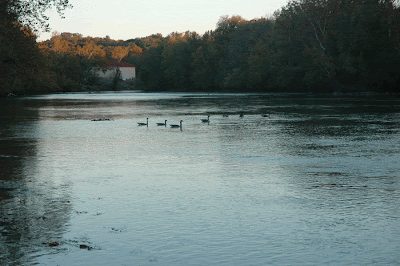Gastrotrich - counted 5
Euclanis - counted 12
Diatoms - several
Amoebas - counted 1
Vorticella - counted 3
Epalxis - several
Green Algae (Cladophora) - counted 1
Centropyxis - counted 1
Oscillatoria - counted 1
Calothrix - counted 1
These numbers may not accurately represent population sizes. I am very limited in my ability to spot organisms. Although the Microaquarium might appear small, it is a large amount of water for such small organisms. It is likely that I did not count every instance, and did not see some organisms at all that were present. It was especially difficult with organisms that live in or near soil, as the soil would often block clear images for identification.
The new organisms identified this week are pictured below.
Image 1: Oscillatoria, a filamentous cyanobacterium, identified from Handbook of Algae, pg. 378.
Image 2: a Calothrix cyanobacteria with visible heterocysts, identified from Handbook of Algae, pg. 427.
Image 3: Cladophora green algae covered in diatoms, as identified in Handbook of Algae, pg. 170. This algae is easily identified because it is one of only a few green algae that branch.
I learned a lot through these Microaquarium observations. While many people might have experienced declines in populations over time, my Microaquarium had plenty to observe every week. I would like to thank the University of Tennesse, Knoxville for the equipment and Dr. Ken McFarland for his invaluable assistance in identifying organisms every week.
Amber O'Malley






.JPG)










